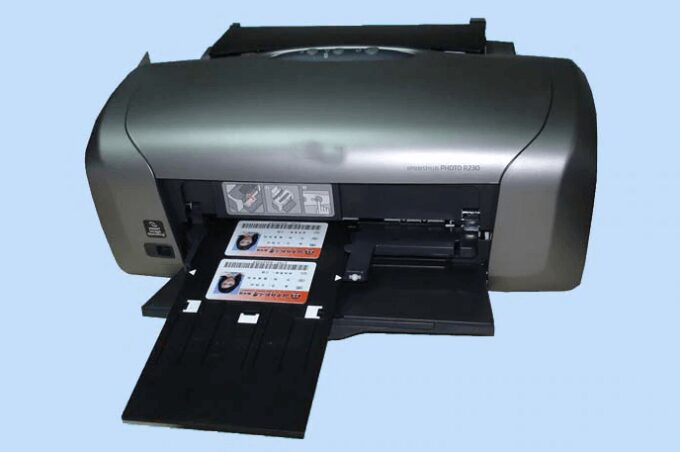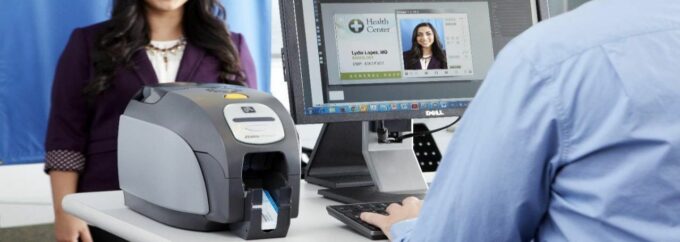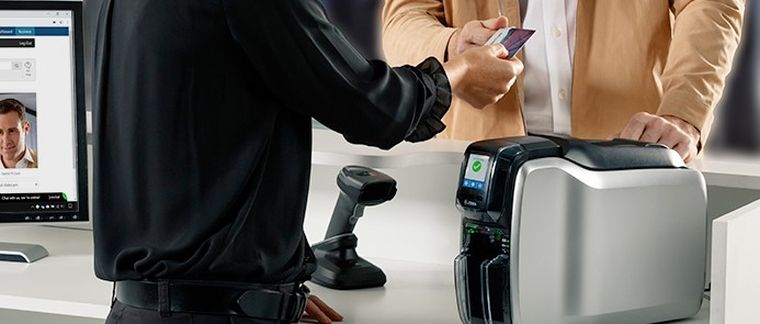Does your organization have the requirement to print ID cards in huge numbers? Then, opting for an ID card printer is ideal for making high-quality ID cards. These specialized printers are highly efficient and can be a potential cost-saver. Printing ID cards is a long-term priority for large-scale businesses and educational institutions. A PVC card printer is a one-time investment that can potentially save you a lot of time and effort in the long run. You need to select the ID card printers over the regular printers, as you will enjoy many benefits.
The blog will highlight the difference between regular printers and ID card printers and ID card printers’ basic principles.
The Principle Behind The ID Card Printers & Regular Printers
The principle behind the ID card printing machine is usually similar to any other type of printer. The basic difference is that these printers usually print on plastic rather than paper or similar materials. The card dimensions usually range between 85.60 × 53.98 mm as a standardized procedure. Most printers operate in a single-feed orientation, which means they can print only one card at a time. Furthermore, they are capable of handling the lamination process as well.
The Basics Of The ID Card Printing Machine

Source:pinterest.com
The ID card printers follow the Dye sublimation process, the most common, and utilize cards and ink ribbon to print. The print heads inside the printers contain small glass pixels that press the ink directly on the cards and directly print them. The direct-to-card printers will provide you with a quicker print speed at a competitive rate than the other reverse transfer printers. Print heads may not reach all over the card edge. For this reason, there would be a small white border all over the edge. These ID card printing machines are designed for printing on adhesive card backs and regular PVC cards.
ID Card Printers: The Basics

Source:facebook.com
The actual printing process of the printers is quite simple. A card is passed under a color ribbon and a thermal print head. The heat generated would transfer the color to the card based on the design and image designed by the user. The resolution for each type of printer can vary, but the standardized printer comes with a resolution of 300 dots per inch. Additionally, this ID card maker machine will feature a fluorescent print or a magnetic stripe based on users’ needs.
The operation of the ID printers will vary based on the make and model of the printer. Most of the time, the printer’s customized ability is based on the software, which lets the users customize various features of the ID card. The ID card printer’s interface is simple and would be easily handled by anyone. Other supplies with the printer include fresh color ribbons and cleaning kits.
Security Options: Different types of ID card printers have various in-built security options. These ID card printers come with lamination and custom security features to remove external threats.
Printer life: The average ID card printer life span is five years, and some brands offer a much longer lifetime.
These machines are also specially designed to print a mass number of cards in a shorter time.
The principle behind ID card printers is essentially the same as any other printer. The primary difference is simply that these printers print on plastic rather than paper or other materials, and they can handle functions like lamination in addition to printing. The card dimensions are typically 85.60 × 53.98 mm as standardized under international regulations, and most printers rely on a single-feed orientation, meaning that only one card is printed at a time.
The actual printing process is relatively simple. A card is simultaneously passed under a thermal print head and a color ribbon. The heat transfers the color onto the card according to a design created by the user. Resolution can vary, but it is typically 300 dots per inch. ID card printers can also add features like a magnetic stripe or a fluorescent print, depending on the user’s needs.
Operating ID card printers vary depending on the make and model, but they are typically hooked to a computer and operated using proprietary software. This software gives users the ability to customize a number of features of the ID card. Still, in most cases, the interface will be familiar to anyone that has used a regular printer before. Other supplies involved include specialized cleaning kits and fresh color ribbons. Magicard printers can help to find the right one.
Selecting the Right ID Card Printers

Source:blog.bluestarinc.com
To get the most out of your investment, you must select the ID card printers that are best equipped to meet your needs. There are a couple of factors to keep in mind:
- Cost – ID card printers can vary significantly, from less than $1,000 to close to $10,000. Before selecting a model, consider how often you will use the printer and what kind of capabilities your printing needs require.
- Volume – Different makes and models of ID card printers have different printing speeds and volume capacities. If you expect to print large numbers of cards or a bulk batch of them, make sure the printer you select can keep up with the load.
- Type – There are three basic types of ID card printers: single-side, dual-side, and laminating. Single-side printers print on one side of the card each pass, dual-side print on both sides simultaneously, and laminating printers print both sides and add lamination in a single pass. Select the best-equipped printer to handle the design of your ID card.
- Size – You don’t want your ID card printer to be just another machine cluttering up your office, so consider how much room you have to work with and how often you will be using the printer. You might also need an easily portable printer.
- Modularity – The ID cards you use today might not meet your needs tomorrow. Look for ID card printers that offer a modular design that allows you to add or subtract capabilities and print cards with varying levels of complexity.
Contact the professionals if you would like to speak to an expert directly about ID card printers.

